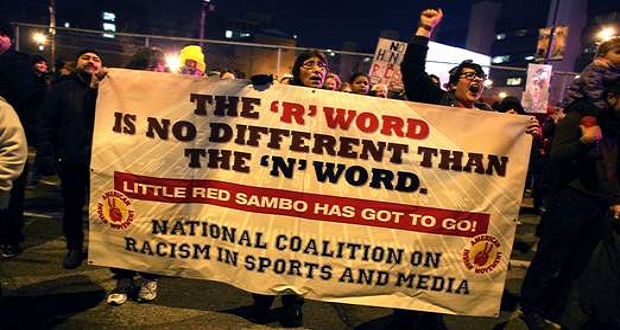The United States is changing due, in great part, to the demographic changes that have been taking place. For example, in the last couple of decades we have seen a significant increase in net immigration. We have also seen noteworthy changes in the racial and ethnic composition of the population. In fact, by 2050 White, non-Hispanics will no longer be the numeric majority in this country.
Because of these demographic changes, managers today are inevitably engaging with workers who have different backgrounds, beliefs, languages, religions, and value orientations. While a diverse workforce can bring many benefits to the company, it will also pose some challenges. In fact, managers today are experiencing increased levels of discomfort because of their inability to deal with this increased diversity in the workplace. Many may feel this discomfort so much so that they spend their time feeling as if they are constantly walking on eggshells.
Despite the increased diversity, there is still reluctance in noticing differences
There are many reasons why managers may feel reluctant or uncomfortable acknowledging differences. Some may fear being labeled a “racist”, and as a result, they take the “cultural blindness” approach. In other words, they choose not to notice differences at all.
Imagine telling a black employee who works for you that you do not see him as black. While you may be trying to suggest that this particular element of his identity will not influence your judgement of him and that you will be fair and unbiased toward him, the impact could be quite different. By saying this you are (1) denying a significant part of his identity, and (2) driving the unintended message that I like you despite your being black.
Other managers may fear they will be perpetuating stereotypes by acknowledging differences. Let us say, for example, you have this notion that Minnesotans are nice and that southerners are hospitable. While these statements will apply to some, it most certainly it will not apply to all Minnesotans or all southerners, and surely not at all times. This type of thinking will undoubtedly result in stereotyping. It is important to allow for individual differences (e.g. some southerners may not be hospitable) and to acknowledge that the context of the situation also has a great deal of influence on someone’s behavior.
For example, I may behave a certain way at a corporate meeting and quite differently when at home interacting with family members. Managers need to understand that acknowledging differences is OK and, quite frankly, inevitable in today’s work environment. The key is not to treat certain characteristics as universal truths because that will unquestionably lead to stereotyping. The actions taken after noticing those differences is what will matter.
The bottom line is clear: acknowledging and learning about differences will not only strengthen a manager’s effectiveness, but it will also communicate respect for diverse employees. In addition, the more managers learn about other cultures and value orientations, the more comfortable they will be around diversity. This, in turn, will increase their readiness to invite more diversity into the company.
How to become more comfortable valuing diversity
In Learning to Value the Other: A Framework of Individual Diversity Development, the authors argue that there are different stages individuals go through in order to progress to a point where they actually have the skills to be able to value, understand, and work effectively across differences. These stages, as well as a short explanation about each one, are listed below:
Unawareness: In this stage, individuals are unaware that certain types of differences exist. In fact, they use their own value orientations to analyze all other cultural orientations. These individuals have not had significant contact with diversity and lack general knowledge of particular types of otherness.
Dualistic awareness: Here, individuals do recognize differences, but perceive them in terms of a good/bad dichotomy. In other words, they negatively label the norms, values, and behaviors that differ from those of their own. It is not uncommon for individuals in this stage to feel a sense of superiority over those they feel are different.
Questioning/Self exploration: This is the stage when individuals begin to think about their own thoughts, feelings, and behaviors in relation to others. They start to acknowledge, if only internally, that there is more than their own sense of what is right and wrong, good and bad. Individuals in this stage use a lot of observation and sometimes may attempt conversations with diverse individuals (primarily those they feel comfortable with) to tentatively start exploring otherness. Other non-threatening ways they use to embark in this exploration may include the media, literature, or music.
Risk taking/Exploration: Individuals in this stage start pushing themselves and taking risks to understand the world from the perspective of those they perceive as different. They not only recognize differences in norms, values, and beliefs but they are also interested in learning more about the diverse employees within the company. This stage is the “gateway to inclusiveness” as individuals begin to transform themselves from difference avoiders to difference seekers.[i]
Integration/Validation: This is the stage when individuals truly understand the commonalities as well as the differences among the many groups within the company. They no longer feel threatened by differences. In fact, when faced with discomfort about specific differences, individuals reflect on what might be behind those feelings as well as the impact of those feelings on behavior. The individuals are quite capable of adapting their behavior so they can work more effectively across differences.
It is important to recognize that, to be effective in today’s diverse workplace, managers will need access to training and development opportunities. These are the types of initiatives that will support them in reaching the stage where they can fully understand and value the differences their employees bring to the company.
Creating an environment that truly values diversity
Current demographic changes, coupled with the fact that many businesses today are expanding their services and products overseas, are driving the need for managers who are culturally competent. Cultural competence encompasses a) awareness and acceptance that differences exist, b) a deeper understanding of those differences, and c) acquiring the necessary relational skills so individuals can work more effectively across those differences. With that said, it is important to realize that building relational skills for working across differences is a gradual and, oftentimes, an uncomfortable developmental journey. That is because “otherness”, by its very nature, can be uncomfortable.
Managers today can play a significant role in building a truly inclusive organization where all employees, regardless of their race, gender, sexual orientation, nationality, or ability level feel their differences affirmed and are inspired to reach their full potential. When working across differences, here are a few things to keep in mind:
- Cultural diversity is here to stay and your success as a manger will increasingly depend on your ability to work effectively with culturally diverse employees. You need to strive to become a culturally competent manager. Cultural competence, however, takes time. It needs to be seen as a life-long journey.
- Although you are being called upon to make adjustments and compromises in your interactions with culturally different people, you are not being asked to change your personality and cultural perspective. Furthermore, you are not expected to adopt the specific features of your employees’ culture. For example, you are not expected to look away just because the Asian employee is more comfortable with indirect eye contact. Nor do you need to stand very close to the Middle Eastern male because that is the behavior he would demonstrate. Your job is to understand where your employees are coming from and not evaluate their behavior negatively.
- Good intentions are not enough. Managers do need to understand the impact of their words and actions on those around them. Well intended individuals can harm without ever knowing they have done so. The end result of that is an even larger divide within the company.
- All acts of intolerance and misunderstandings within the company must be confronted, but done so in a respectful way. Effective interventions seek to educate. Also remember that saying nothing or choosing the cultural blindness approach are not viable options.
- Rest assured that differences are just that – differences. The more comfortable with differences you are, the more comfortable you will be in hiring, working with, or promoting culturally diverse employees. If you do not notice, learn about, or respond appropriately to cultural differences in the workplace, you will be seriously compromising efficiency and productivity within the company.
[i] Dreasher, L. M. (2010). “Preparing advisors to work effectively across differences: A three-step framework.” In J. G. Volker, M. A. Miller, & S. L. Neste (Eds.), Comprehensive advisor training and development: Practices that deliver (pp. 155-169). Manhattan, KS: National Academic Advising Association.



















